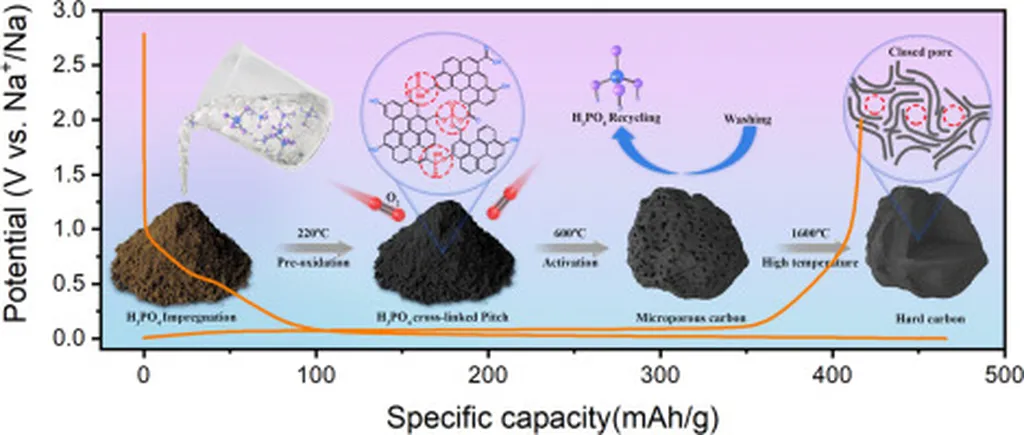Researchers Alexis Front, Tapio Ala-Nissila, and Miguel A. Caro from the University of Helsinki have recently published a study that sheds light on the sodium-storage mechanisms in hard carbon (HC) materials, which are crucial for advancing sodium-ion battery (SIB) technology. Their work, published in the journal Nature Communications, provides a comprehensive understanding of how the density of hard carbon materials affects their performance in sodium-ion batteries.
The team employed a multiscale methodology that combines grand-canonical Monte Carlo (GCMC) simulations with a machine-learning interatomic potential based on the Gaussian approximation potential (GAP) framework. This approach allowed them to investigate sodium insertion mechanisms in hard carbons with densities ranging from 0.7 to 1.9 grams per cubic centimeter. By analyzing the structural and thermodynamic properties of these materials, the researchers found that increasing carbon density reduces pore size and accessibility, which in turn modulates the relative contributions of adsorption, intercalation, and pore filling to the overall storage capacity.
The study revealed that low-density carbons favor pore-filling, achieving extremely high capacities at near-zero voltages. However, these materials also exhibit significant volume expansion, which can compromise their structural integrity over time. On the other hand, high-density carbons primarily store sodium through adsorption and intercalation, leading to lower but more stable capacities. These materials also tend to have safer operating voltages and minimal volume expansion, making them more suitable for long-term cycling stability.
The researchers identified intermediate-density carbons, ranging from 1.3 to 1.6 grams per cubic centimeter, as providing the most balanced performance. These materials combine moderate capacity (approximately 400 milliamp-hours per gram), safe operating voltages, and minimal volume expansion (less than 10%), making them ideal candidates for optimizing HC-based SIB anodes. The findings establish a direct correlation between carbon density and electrochemical behavior, offering atomic-scale insight into how hard carbon morphology governs sodium-storage.
The proposed framework provides a rational design principle for optimizing HC-based SIB anodes toward high energy density and long-term cycling stability. This research has significant implications for the energy sector, particularly in the development of advanced energy storage systems. By understanding the sodium-storage mechanisms in hard carbon materials, researchers can design more efficient and durable sodium-ion batteries, which are crucial for grid storage, electric vehicles, and other renewable energy applications.
The study, titled “Density-dependent sodium-storage mechanisms in hard carbon materials,” was published in Nature Communications, a reputable journal known for its high-impact research in the field of materials science and energy storage. The findings represent a significant step forward in the development of next-generation energy storage technologies, paving the way for a more sustainable and energy-efficient future.
In summary, the research conducted by Alexis Front, Tapio Ala-Nissila, and Miguel A. Caro provides valuable insights into the sodium-storage mechanisms in hard carbon materials, highlighting the importance of carbon density in optimizing the performance of sodium-ion batteries. Their work offers a practical approach for designing more efficient and durable energy storage systems, which are essential for the energy sector’s transition towards renewable energy sources.
This article is based on research available at arXiv.

